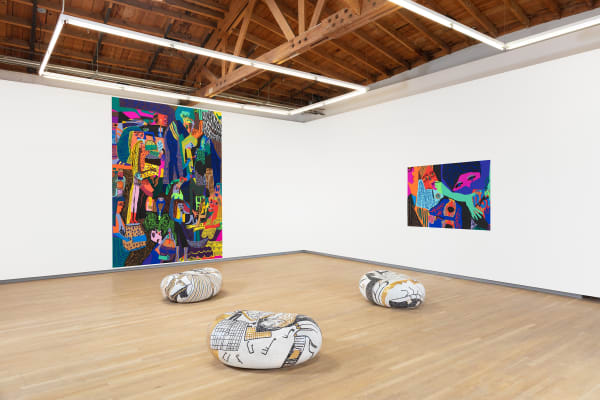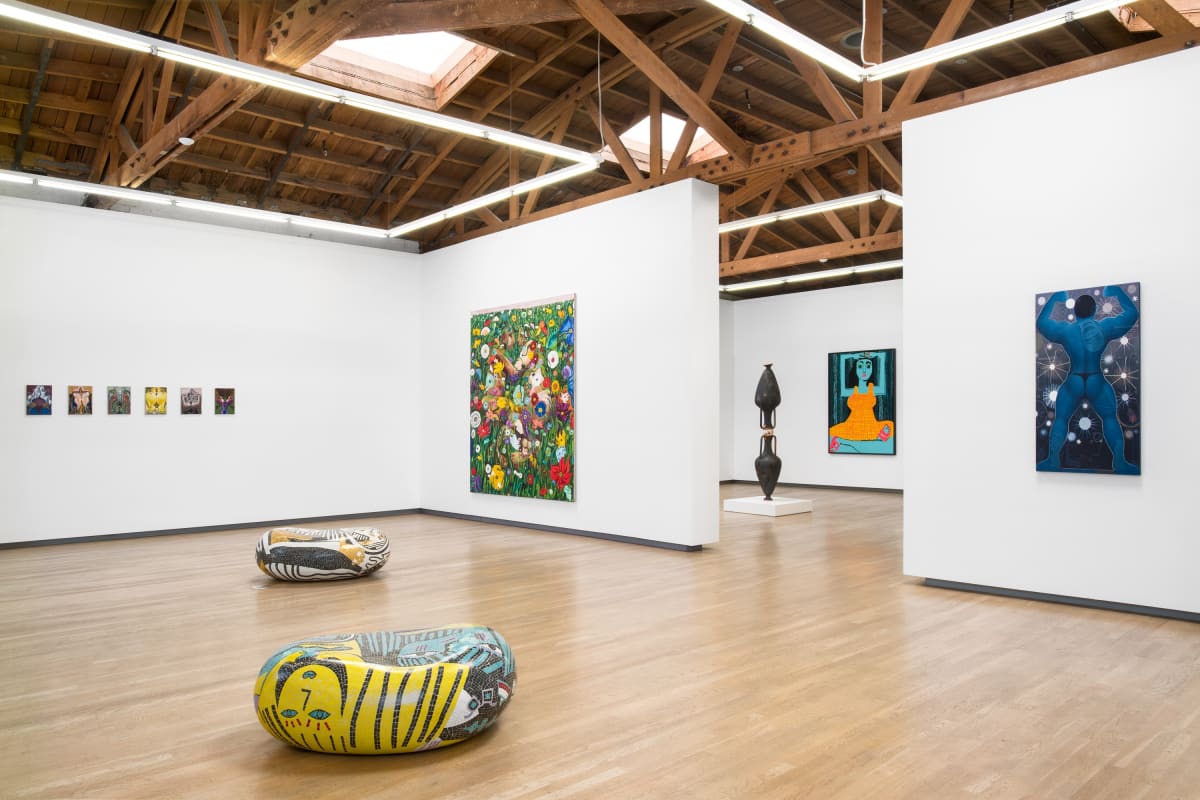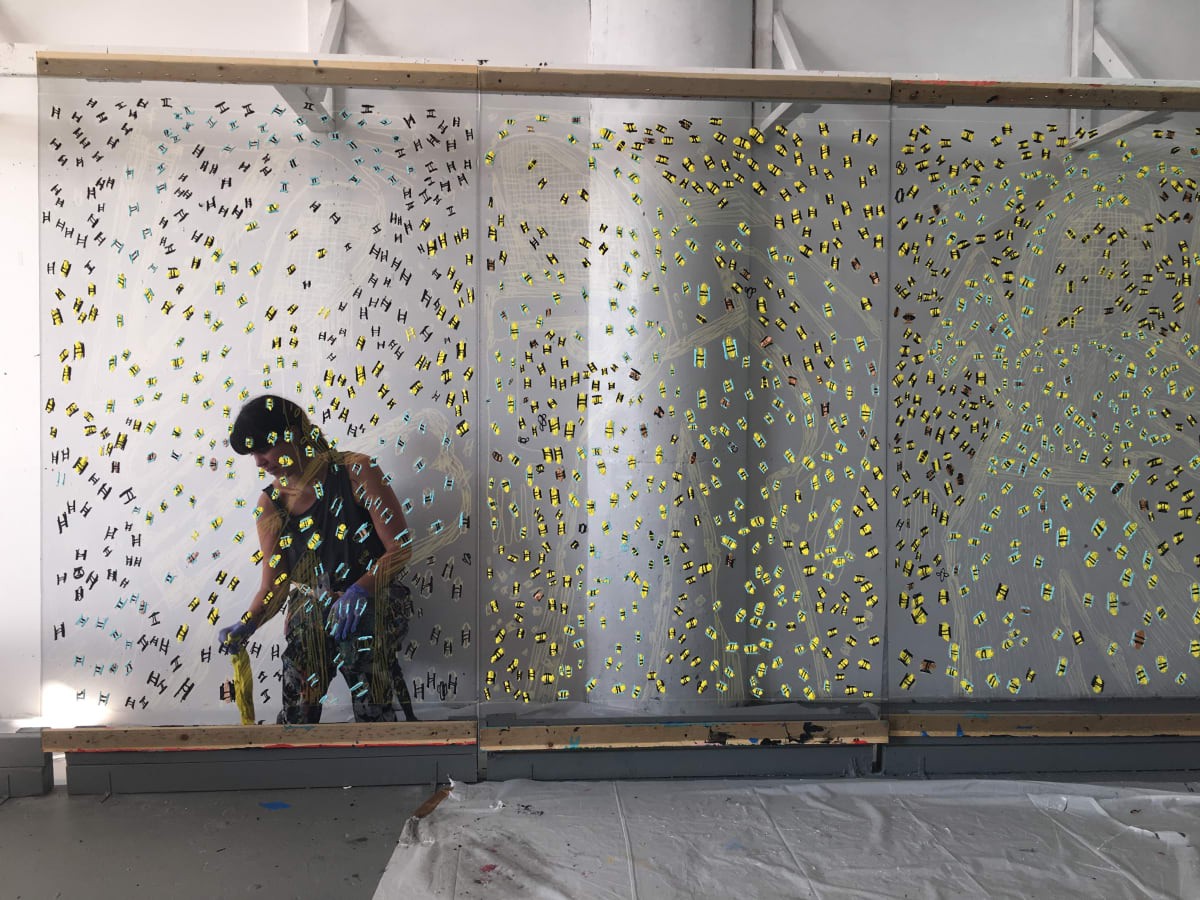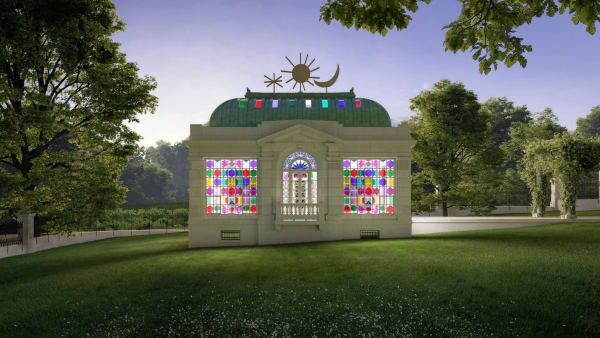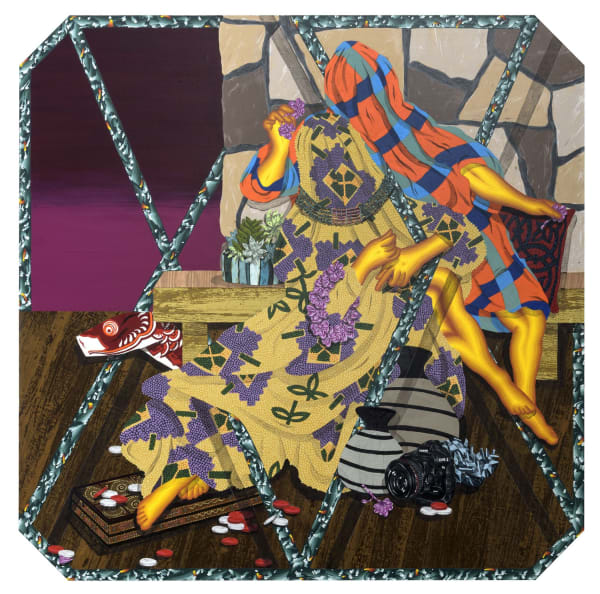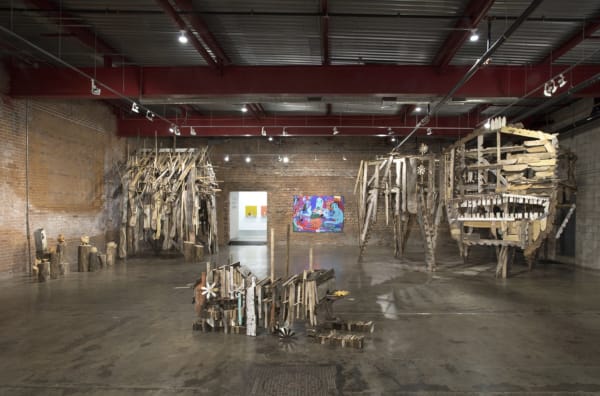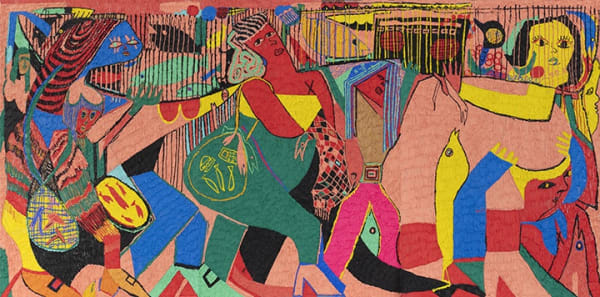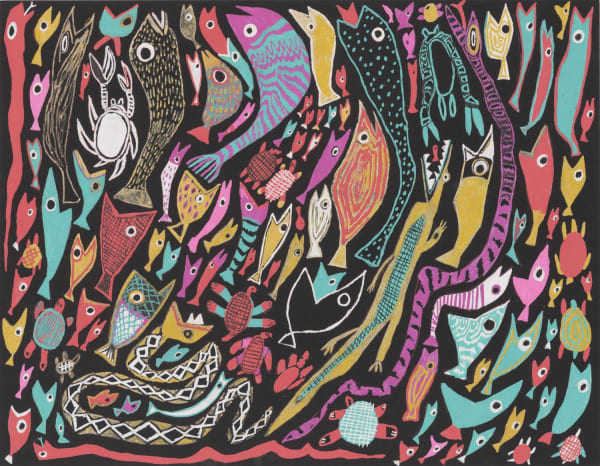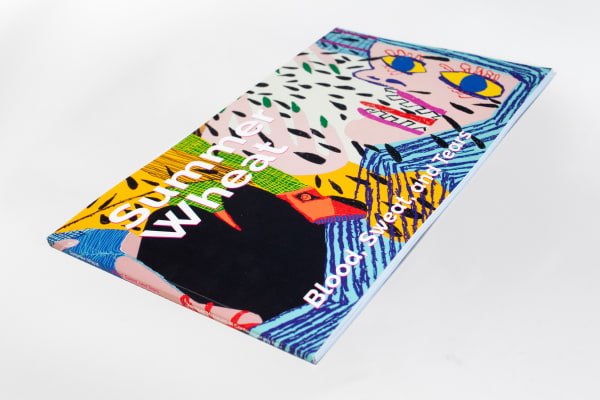Summer Wheat b. 1977
Summer Wheat is known for her vibrant paintings, multifaceted sculptures, and immersive installations that weave together the history of materiality, figuration, and abstraction in both fine art and craft milieus. Each series engages individual and collective human experiences drawn from historical and contemporary sources, mediated through a variety of references ranging from ancient art and medieval tapestries, to etchings from the Renaissance, to modernist abstractions. Wheat’s work examines various manifestations of labor, leisure, commerce, and class through the depiction of numerous figures and archetypes such as farmers, hunters, beekeepers, gardeners, weavers, bankers, and movie stars. The artist’s densely populated “scapes” envision worlds where time seems to have collapsed and every person, regardless of social status, occupies a shared/equal space, in which both labor and leisure are paths to healing humanity. Using a tongue-in-cheek type of humor inspired by comic strips, Wheat subverts conventional hierarchical structures and stereotypes to create more expansive depictions of daily life throughout history.
For Wheat, labor functions as both a conceptual and formal connective thread that runs throughout her oeuvre. This relates to her labor-intensive process of making a painting, the term’s definition, as well as its historic visual representation. Wheat’s work often employs the visualization of labor as a tool to expose gender and class inequality. For example, in Swamp Hunters (2017), two women carry a large net filled with their game from the day—rabbits, turtles, boars, and a large bobcat. The women are bent over with the net thrown over their shoulders, the weight of the load is palpable in their tired expressions. In the background is a dense network of foliage that the women are traversing through, giving the viewer a sense of the difficult environment they must navigate to survive. Inspired by medieval tapestries and historical tableaux in which human figures often contend with the natural world, Wheat depicts the successful aftermath of the hunt rather than the battle. By omitting the violence of the kill, she conflates the traditional hunter and gatherer roles, giving them equal footing.
A signature aspect of Wheat’s work is her expressive use of color and unique method of building a painting, which integrates various tools, from her fingers, to syringes, to plastic scrapers, to cake decorating paraphernalia. Using vibrant, almost fluorescent colors of acrylic paint, she combines multiple physical techniques—pushing paint through wire mesh, painting directly onto a heavily impastoed surface, or applying select embellishments—that require her to move around her canvas, working both vertically and horizontally, on the front and the back of each piece. Wheat’s methods and engagement with the emotive nature of color embrace intuition and felt experience over conventional reason and logic, destabilizing the boundaries between figure and ground, representation and abstraction, portrait and landscape, and fine art and craft. The result is tactile, vivid work that engages process, form, and narrative equally, creating layered, non-linear compositions that offer alternative versions of history, mythology, and folklore.
Summer Wheat (b. 1977, Oklahoma City, OK) received a B.A. from the University of Central Oklahoma and an M.F.A. from Savannah College of Art and Design. Solo exhibitions of her work have been organized at the Mint Museum, Charlotte, NC (2021); Kemper Museum of Contemporary Art, Kansas City, MO (2020); KMAC Museum, Louisville, KY (2019); Shulamit Nazarian, Los Angeles, CA (2021. 2018); Smack Mellon, New York, NY (2018); Henry Art Gallery, University of Washington, Seattle, WA (2017); and Oklahoma Contemporary, Oklahoma City, OK (2016). Select group exhibitions featuring her work include Yaro Pickers, Harper’s Books, New York, NY (2020); Summer Wheat and Hirosuke Yabe, Wasserman Projects, Detroit, MI (2019); America Will Be! Surveying the Contemporary Landscape, Dallas Museum of Art, Dallas, TX (2019); The Magnetic Fields, Gio Marconi, Milan, Italy (2019); SEED, Paul Kasmin Gallery, New York, NY (2018); More Material, Salon 94, New York, NY (2014); Expanding the Field of Abstraction, Institute of Contemporary Art, Boston, MA (2013-14); beyond the stretcher, deCordova Museum and Sculpture Park, Lincoln, MA (2013); and Paradox Maintenance Technicians: A comprehensive technical manual to contemporary painting from Los Angeles and Beyond, Torrance Art Museum, Torrance, CA (2013).
Wheat’s work is in numerous public and private collections, including the Dallas Museum of Art, Dallas, TX; de Young Museum, San Francisco, CA; Peréz Art Museum Miami, Miami, FL; The Henry Art Gallery at the University of Washington, Seattle, WA; The Mint Museum, Charlotte, NC; the Speed Art Museum in Louisville, KY, and Kemper Museum of Contemporary Art, Kansas City, MO. Wheat has received several awards and prizes including, the Northern Trust Purchase Prize at EXPO Chicago (2019) and the New York NADA Artadia Award (2016).
In 2022, the Kansas City Museum announced that it selected Summer Wheat to transform the museum's Carriage House Beaux-Arts Conservatory on the property into a light-filled sacred space entitled JewelHouse. slated to open in 2025. Wheat will have a solo exhibition at the Savannah College of Art and Design (SCAD) forthcoming in 2025.
-
 Summer WheatHalf Full, 2025Acrylic paint and gouache on aluminum mesh69 ³⁄₄ x 48 ³⁄₄ x 2 ¹⁄₄ in
Summer WheatHalf Full, 2025Acrylic paint and gouache on aluminum mesh69 ³⁄₄ x 48 ³⁄₄ x 2 ¹⁄₄ in
177.2 x 123.8 x 5.7 cm -
 Summer WheatShark Fountain, 2025Acrylic paint and gouache on aluminum mesh69 ³⁄₄ x 48 ³⁄₄ x 2 ¹⁄₄ in
Summer WheatShark Fountain, 2025Acrylic paint and gouache on aluminum mesh69 ³⁄₄ x 48 ³⁄₄ x 2 ¹⁄₄ in
177.2 x 123.8 x 5.7 cm -
 Summer WheatTouching the Surface, 2025Acrylic paint and gouache on aluminum mesh48 ¾ x 35 ½ x 2 ¼ in
Summer WheatTouching the Surface, 2025Acrylic paint and gouache on aluminum mesh48 ¾ x 35 ½ x 2 ¼ in
121.3 x 87.6 x 5.7 cm -
 Summer WheatNo Rain No Flowers, 2025Acrylic paint and gouache on aluminum mesh48 ¾ x 69 ¾ x 2 ¼ in
Summer WheatNo Rain No Flowers, 2025Acrylic paint and gouache on aluminum mesh48 ¾ x 69 ¾ x 2 ¼ in
123.8 x 177.2 x 5.7 cm -
 Summer WheatRivers, 2024Acrylic paint and gouache on aluminum mesh69 ¾ x 95 ¾ x 2 ¼ in
Summer WheatRivers, 2024Acrylic paint and gouache on aluminum mesh69 ¾ x 95 ¾ x 2 ¼ in
177.2 x 243.2 x 5.7 cm -
 Summer WheatFinger Puppets, 2023Acrylic paint and gouache on aluminum mesh, framed69 ½ x 95 ½ in
Summer WheatFinger Puppets, 2023Acrylic paint and gouache on aluminum mesh, framed69 ½ x 95 ½ in
176.5 x 242.6 cm -
 Summer WheatMeadow, 2024Acrylic paint and gouache on aluminum mesh69 ¾ x 95 ¾ x 2 ¼ in
Summer WheatMeadow, 2024Acrylic paint and gouache on aluminum mesh69 ¾ x 95 ¾ x 2 ¼ in
177.2 x 243.2 x 5.7 cm -
 Summer WheatRose Garden, 2023Acrylic paint and gouache on aluminum mesh, framed69 ½ x 95 ½ in
Summer WheatRose Garden, 2023Acrylic paint and gouache on aluminum mesh, framed69 ½ x 95 ½ in
176.5 x 242.6 cm -
 Summer WheatFertile Ground, 2023Acrylic paint and gouache on aluminum mesh, framed48 ¾ x 69 ¾ in
Summer WheatFertile Ground, 2023Acrylic paint and gouache on aluminum mesh, framed48 ¾ x 69 ¾ in
123.8 x 177.2 cm -
 Summer WheatHoles, 2023Acrylic paint and gouache on aluminum mesh, framed69 ½ x 95 ½ in
Summer WheatHoles, 2023Acrylic paint and gouache on aluminum mesh, framed69 ½ x 95 ½ in
176.5 x 242.6 cm -
 Summer WheatFountains, 2023Acrylic paint and gouache on aluminum mesh, framed69 ½ x 95 ½ in
Summer WheatFountains, 2023Acrylic paint and gouache on aluminum mesh, framed69 ½ x 95 ½ in
176.5 x 242.6 cm -
 Summer WheatGroundwork, 2023Acrylic paint and gouache on aluminum mesh, framed69 ½ x 95 ½ in
Summer WheatGroundwork, 2023Acrylic paint and gouache on aluminum mesh, framed69 ½ x 95 ½ in
176.5 x 242.6 cm -
 Summer WheatWatering Rocks, 2023Acrylic paint and gouache on aluminum mesh, framed69 ¾ x 48 ¾ in
Summer WheatWatering Rocks, 2023Acrylic paint and gouache on aluminum mesh, framed69 ¾ x 48 ¾ in
177.2 x 123.8 cm -
 Summer WheatThirsty in the Sun, 2025Acrylic paint and gouache on aluminum mesh69 ¾ x 48 ¾ x 2 ¼ in
Summer WheatThirsty in the Sun, 2025Acrylic paint and gouache on aluminum mesh69 ¾ x 48 ¾ x 2 ¼ in
177.2 x 123.8 x 5.7 cm -
 Summer WheatThirsty on a Bed of Rocks, 2025Acrylic paint and gouache on aluminum mesh69 ¾ x 48 ¾ x 2 ¼ in
Summer WheatThirsty on a Bed of Rocks, 2025Acrylic paint and gouache on aluminum mesh69 ¾ x 48 ¾ x 2 ¼ in
177.2 x 123.8 x 5.7 cm -
 Summer WheatCatching Chickens, 2023fiberglass, stone, glass, gold and grout31 x 41 x 16 in
Summer WheatCatching Chickens, 2023fiberglass, stone, glass, gold and grout31 x 41 x 16 in
78.7 x 104.1 x 40.6 cmVariation of 3 -
 Summer WheatCatching a Butterfly, 2023fiberglass, stone, glass, gold and grout31 x 41 x 16 in
Summer WheatCatching a Butterfly, 2023fiberglass, stone, glass, gold and grout31 x 41 x 16 in
78.7 x 104.1 x 40.6 cmVariation of 3 -
 Summer WheatCatching a Frog, 2023fiberglass, stone, glass, gold and grout31 x 41 x 16 in
Summer WheatCatching a Frog, 2023fiberglass, stone, glass, gold and grout31 x 41 x 16 in
78.7 x 104.1 x 40.6 cmVariation of 3 -
 Summer WheatSeed Fountain, 2023Acrylic paint and gouache on aluminum mesh, framed69 ¾ x 48 ¾ in
Summer WheatSeed Fountain, 2023Acrylic paint and gouache on aluminum mesh, framed69 ¾ x 48 ¾ in
177.2 x 123.8 cm -
 Summer WheatLeap Frog, 2023Acrylic paint and gouache on aluminum mesh, framed69 ¾ x 48 ¾ in
Summer WheatLeap Frog, 2023Acrylic paint and gouache on aluminum mesh, framed69 ¾ x 48 ¾ in
177.2 x 123.8 cm -
 Summer WheatMustard and Ketchup, 2022acrylic on aluminum mesh68 x 47 in
Summer WheatMustard and Ketchup, 2022acrylic on aluminum mesh68 x 47 in
172.7 x 119.4 cm -
 Summer WheatMothers, 2020Acrylic on aluminum mesh68 x 141 inches
Summer WheatMothers, 2020Acrylic on aluminum mesh68 x 141 inches -
 Summer WheatLove Birds (Left), 2021Acrylic paint and gouache on aluminum mesh69 1/2 x 95 1/2 x 2 in
Summer WheatLove Birds (Left), 2021Acrylic paint and gouache on aluminum mesh69 1/2 x 95 1/2 x 2 in
176.5 x 242.6 x 5.1 cm -
 Summer WheatForagers, 2020Colored vinyl on mylar805.5 x 738.5 inches
Summer WheatForagers, 2020Colored vinyl on mylar805.5 x 738.5 inches -
 Summer WheatFruit Operation, 2020Acrylic on aluminum mesh47 x 68 inches
Summer WheatFruit Operation, 2020Acrylic on aluminum mesh47 x 68 inches -
 Summer WheatFootprints, 2019Acrylic on aluminum mesh68 x 94 inches
Summer WheatFootprints, 2019Acrylic on aluminum mesh68 x 94 inches -
 Summer WheatGrooming Cow, 2019Acrylic on aluminum mesh68 x 94 inches
Summer WheatGrooming Cow, 2019Acrylic on aluminum mesh68 x 94 inches -
 Summer WheatApiary I, II, III, 2017Acrylic on aluminum mesh71 x 144 inches
Summer WheatApiary I, II, III, 2017Acrylic on aluminum mesh71 x 144 inches -
 Summer WheatShallow Water, 2019Acrylic on aluminum mesh68 x 141
Summer WheatShallow Water, 2019Acrylic on aluminum mesh68 x 141 -
 Summer WheatBeekeepers, 2019Acrylic on aluminum mesh68 x 235
Summer WheatBeekeepers, 2019Acrylic on aluminum mesh68 x 235
-
 Summer Wheat, Touching the Surface, Nazarian / Curcio, Los Angeles, 2025
Summer Wheat, Touching the Surface, Nazarian / Curcio, Los Angeles, 2025 -
 Summer Wheat, Touching the Surface, Nazarian / Curcio, Los Angeles, 2025
Summer Wheat, Touching the Surface, Nazarian / Curcio, Los Angeles, 2025 -
 Summer Wheat, Touching the Surface, Nazarian / Curcio, Los Angeles, 2025
Summer Wheat, Touching the Surface, Nazarian / Curcio, Los Angeles, 2025 -
 Summer Wheat. Fertile Ground, Nazarian / Curcio, Los Angeles, 2024
Summer Wheat. Fertile Ground, Nazarian / Curcio, Los Angeles, 2024 -
 Summer Wheat. Fertile Ground, Nazarian / Curcio, Los Angeles, 2024
Summer Wheat. Fertile Ground, Nazarian / Curcio, Los Angeles, 2024 -
 Summer Wheat. Fertile Ground, Nazarian / Curcio, Los Angeles, 2024
Summer Wheat. Fertile Ground, Nazarian / Curcio, Los Angeles, 2024 -
 Summer Wheat. Friends and Lovers, Shulamit Nazarian, Los Angeles, 2023.
Summer Wheat. Friends and Lovers, Shulamit Nazarian, Los Angeles, 2023. -
 Summer Wheat. Kiss and Tell. La Fondazione Mudima Di Milano. 2023.
Summer Wheat. Kiss and Tell. La Fondazione Mudima Di Milano. 2023. -
 Summer Wheat. Kiss and Tell. La Fondazione Mudima Di Milano. 2023.
Summer Wheat. Kiss and Tell. La Fondazione Mudima Di Milano. 2023. -
 Summer Wheat. Kiss and Tell. La Fondazione Mudima Di Milano. 2023.
Summer Wheat. Kiss and Tell. La Fondazione Mudima Di Milano. 2023. -
 Summer Wheat. Kiss and Tell. La Fondazione Mudima Di Milano. 2023.
Summer Wheat. Kiss and Tell. La Fondazione Mudima Di Milano. 2023. -
 Summer Wheat. Kiss and Tell. La Fondazione Mudima Di Milano. 2023.
Summer Wheat. Kiss and Tell. La Fondazione Mudima Di Milano. 2023. -

Summer Wheat. Fine Line, Shulamit Nazarian, Los Angeles, 2022
-
 Summer Wheat. Fine Line, Shulamit Nazarian, Los Angeles, 2022
Summer Wheat. Fine Line, Shulamit Nazarian, Los Angeles, 2022 -

Summer Wheat. Anything Can Happen, Shulamit Nazarian, Los Angeles, 2021
-
 Summer Wheat. Anything Can Happen, Shulamit Nazarian, Los Angeles, 2021
Summer Wheat. Anything Can Happen, Shulamit Nazarian, Los Angeles, 2021 -

Summer Wheat. Anything Can Happen, Shulamit Nazarian, Los Angeles, 2021
-

Summer Wheat. Blood, Sweat, and Tears, The Kemper Museum of Contemporary Art, Kansas City, 2020. Photography: E. G. Shempf.
-

Summer Wheat. Blood, Sweat, and Tears, The Kemper Museum of Contemporary Art, Kansas City, 2020. Photography: E. G. Shempf.
-

Summer Wheat. Blood, Sweat, and Tears, The Kemper Museum of Contemporary Art, Kansas City, 2020. Photography: E. G. Shempf.
-

Summer Wheat. Blood, Sweat, and Tears, The Kemper Museum of Contemporary Art, Kansas City, 2020. Photography: E. G. Shempf.
-

Summer Wheat. Blood, Sweat, and Tears, The Kemper Museum of Contemporary Art, Kansas City, 2020. Photography: E. G. Shempf.
-

Summer Wheat. Catch and Release, Shulamit Nazarian, 2018
-

Summer Wheat. Catch and Release, Shulamit Nazarian, 2018
-

Summer Wheat
Touching the Surface November 8 - December 20, 2025Nazarian / Curcio is pleased to announce Touching the Surface , a solo exhibition of new paintings by New York–based artist Summer Wheat. This marks the artist’s fourth solo exhibition with the gallery. In Touching the Surface , Wheat explores a world in transition, where perception shifts and familiar forms...Read more -

Midnight Gardens
Dabin Ahn, Alex Anderson, Avital Burg, Widline Cadet, Gabe Cortese, Annie Lapin, Ken Gun Min, Sabrina Piersol, Alexandria Tarver, and Summer Wheat. January 11 - February 8, 2025Nazarian / Curcio is pleased to present Midnight Gardens , featuring new works by Dabin Ahn, Alex Anderson, Avital Burg, Widline Cadet, Gabe Cortese, Annie Lapin, Ken Gun Min, Sabrina Piersol, Alexandria Tarver, and Summer Wheat. Midnight Gardens brings together a group of artists exploring landscapes, still lifes, and botanical...Read more -

Summer Wheat
Fertile Ground February 24 - April 6, 2024Nazarian / Curcio is pleased to announce Fertile Ground , by Brooklyn-based artist Summer Wheat. This will be the artist’s third solo exhibition with the gallery. Set in a mythical and lush gardenscape, the paintings and sculptures in this exhibition continue the artist’s longstanding interest in depictions of labor and...Read more -

Friends and Lovers
July 15 - August 19, 2023Shulamit Nazarian is pleased to present Friends and Lovers , an exhibition that brings together over twenty artists exploring ideas of kinship. Featuring painting, drawing, photography, and sculpture, the exhibition spans eight decades, uniting a cross-disciplinary and intergenerational group of artists. FEATURing Alina Perez Alex Bradley Cohen Anthony Iacono Charles...Read more -

10 Years
July 9 - August 27, 2022Shulamit Nazarian, Los Angeles is pleased to present 10 YEARS , a special group exhibition celebrating this milestone anniversary for the gallery. To mark the anniversary, founder Shula Nazarian and co-owner Seth Curcio have selected works by more than twenty artists from the gallery’s program. The exhibition will be on...Read more -

Summer Wheat
Fine Line – Online Exhibition February 25 - March 25, 2022Shulamit Nazarian is pleased to present Fine Line , an online solo presentation featuring four new paintings by New York-based artist Summer Wheat. Fine Line continues the artist’s interest in depicting the quotidian as monumental. These works celebrate domestic labor and bring attention to that which is often overlooked, both...Read more -

Summer Wheat
Anything Can Happen March 20 - May 1, 2021Shulamit Nazarian is pleased to present Anything Can Happen, a solo exhibition by Brooklyn-based artist Summer Wheat. This will be the artist’s second solo exhibition with the gallery.Read more
The paintings in Anything Can Happen continue the artist’s exploration of gendered archetypes found in history, relationships to labor, and the monumentalizing of the quotidian. Expanding upon these interests, this body of work considers how the destabilization of our present moment can inspire a more wondrous experience of the everyday. -

High Contrast
Diana Al-Hadid, Sarah Peters and Sue Williams. Curated by Summer Wheat. March 20 - May 1, 2021Shulamit Nazarian is pleased to present High Contrast , a group exhibition curated by New York-based artist Summer Wheat. Presented in the gallery's second exhibition space, High Contrast features works by Diana Al-Hadid, Sarah Peters and Sue Williams. It will be on view concurrently with Wheat's solo exhibition, Anything Can...Read more -

Hold on Tight
July 11 - August 22, 2020Shulamit Nazarian is pleased to present Hold on Tight , an exhibition of works by Annie Lapin, Mark McKnight, Naudline Pierre, Fay Ray, Michael Stamm, Cammie Staros, Summer Wheat and Wendy White. Our current moment is filled with uncertainty. Much of our daily life is now encompassed by a sense...Read more -

Turn back, Turn Back!
March 14 - June 27, 2020Shulamit Nazarian is pleased to present Turn Back, Turn Back! an exhibition of works by Diana Yesenia Alvarado, Trenton Doyle Hancock, Rainen Knecht, Lila de Magalhaes, Elham Rokni, Summer Wheat and Tori Wrånes. These artists explore narrative structures that resonate with a deep history of storytelling found in ancient myths, fables, and folktales.Read more -

The Procession
Shulamit Nazarian at Vacation, NY October 11 - 27, 2019Shulamit Nazarian, Los Angeles is pleased to present The Procession , a group exhibition on view at the gallery time-share VACATION in New York’s Lower East Side. This will be Shulamit Nazarian’s first pop-up presentation in New York City. The exhibition features new and recent works by gallery artists Trenton...Read more -

Summer Wheat
Catch and Release September 8 - October 27, 2018Shulamit Nazarian is pleased to present Catch and Release, a solo exhibition by Brooklyn-based artist Summer Wheat. This will be the artist’s first solo exhibition in Los Angeles.Read more
Wheat’s paintings present a tradition in which women were the original hunters, technologists, and artists, and Catch and Release continues her exploration of this archetype and its many variations. The series depicts women catching and releasing fish as a symbol of fertility, creation, and transformation. In connecting to water and its creatures, the subjects demonstrate an inherent link to natural elements and to the intricate depths of the unconscious.
-

The Armory Show
Daniel Gibson, iris yirei hu, Reuven Israel, Ken Gun Min, Kour Pour, and Summer Wheat. September 5 - 7, 2025Nazarian / Curcio is pleased to present works by Los Angeles based artist Daniel Gibson, Los Angeles based artist iris yirei hu, Brooklyn based artist...Read more -

Frieze LA
Widline Cadet, Maria A. Guzmán Capron, Vincent Pocsik, and Summer Wheat February 20 - 23, 2025Thursday, February 20: 10am – 7pm (invitation only) Friday, February 21: 11am – 7pm (invitation only 11am – 1pm, open to the public from 1pm)...Read more -
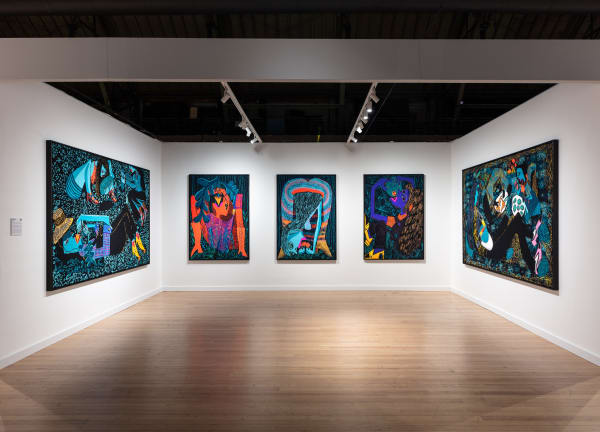
ADAA Art Show
Summer Wheat November 1 - 5, 2023For our debut at ADAA: The Art Show, Shulamit Nazarian is pleased to announce a solo presentation by New York-based artist Summer Wheat. Wheat’s installation...Read more -
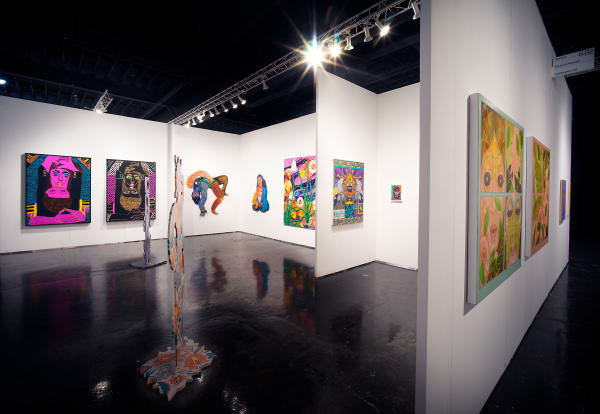
NADA Miami
Amir H. Fallah, Daniel Gibson, Ken Gun Min, Maria A. Guzmán Capron, Summer Wheat, Trenton Doyle Hancock, Wendell Gladstone November 30 - December 3, 2022For NADA Miami 2022, Shulamit Nazarian is pleased to present new works by Berkeley-based artist Maria A. Guzmán Capron; Los Angeles-based artists Amir H. Fallah,...Read more -

EXPO CHICAGO
Cammie Staros, Daniel Gibson, Manal Kara, Summer Wheat, Trenton Doyle Hancock April 7 - 10, 2022For EXPO Chicago 2022, Shulamit Nazarian is pleased to present new works by Los Angeles-based artists Cammie Staros and Daniel Gibson, Gary, IN-based artist Manal...Read more -
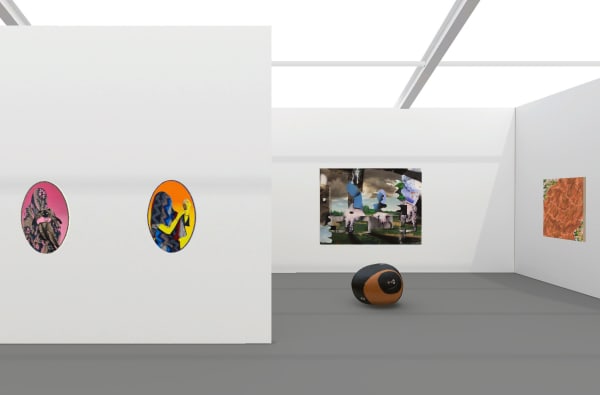
UNTITLED ART ONLINE
Amir H. Fallah, Wendell Gladstone, Annie Lapin, Michael Stamm, Cammie Staros, and Summer Wheat July 31 - August 2, 2020Register to attend at UNTITLED, ART Online Booth C9 July 31–August 2, 2020 Preview: Thursday, July 30, 8am PST Shulamit Nazarian, Los Angeles is pleased...Read more -
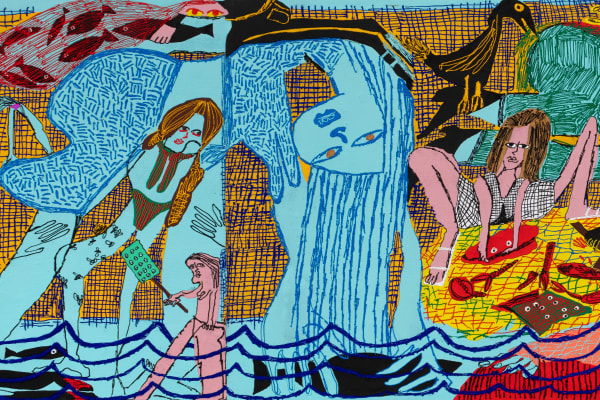
The Armory Show - Platform
Summer Wheat March 5 - 8, 2020Shulamit Nazarian is pleased to present a monumental work by Summer Wheat for The Armory Show: Platform section. Sand Castles is a new tactile painting...Read more -

Untitled Miami Beach
Amir H. Fallah, Trenton Doyle Hancock, Summer Wheat, and Wendy White December 3 - 8, 2019For the year’s edition of UNTITLED Miami Beach, Shulamit Nazarian is pleased to present new and recent works by Los Angeles-based artist Amir H. Fallah,...Read more -

Expo Chicago
Cammie Staros and Summer Wheat September 19 - 22, 2019Shulamit Nazarian is pleased to present new works by Los Angeles-based artist Cammie Staros and New York-based artist Summer Wheat. The presentation focuses on two...Read more -
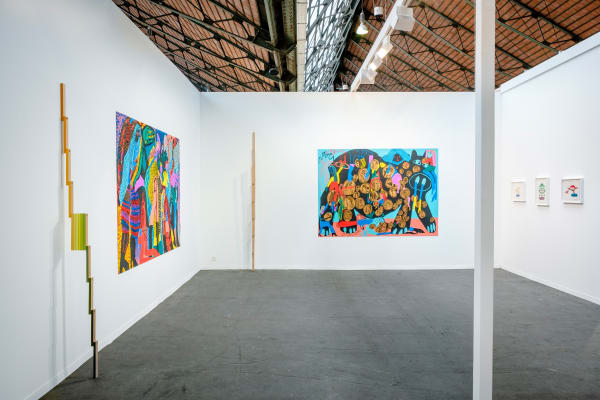
Art Brussels
Chris Bogia, Reuven Israel, Michael Stamm, and Summer Wheat April 25 - 28, 2019Shulamit Nazarian is pleased to present works by four New York-based artists: Chris Bogia, Reuven Israel, Michael Stamm and Summer Wheat. Chris Bogia’s watercolors and...Read more -
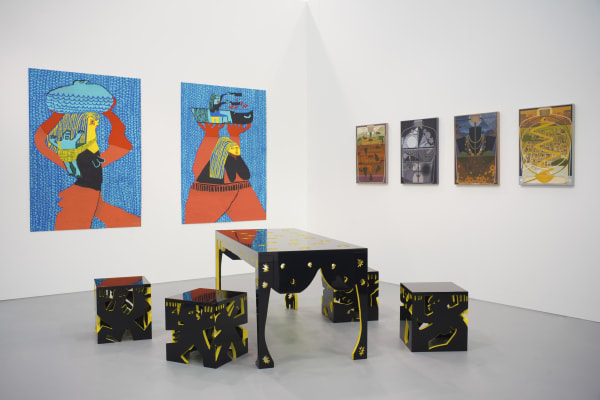
Untitled Miami Beach
Trenton Doyle Hancock, Michael Stamm, and Summer Wheat December 4 - 9, 2018For UNTITLED Miami Beach 2018, Shulamit Nazarian is pleased to present a three-person presentation of new and recent works by Houston-based Trenton Doyle Hancock and...Read more -

Art Brussels
Fay Ray, Cammie Staros, and Summer Wheat April 19 - 22, 2018Shulamit Nazarian is pleased to present a group booth featuring new and recent works by Fay Ray, Cammie Staros, and Summer Wheat. Each artist references...Read more
-

Summer Wheat: Fruits of Labor at SCAD
July 2, 2025Summer Wheat exhibition: 'Fruits of Labor' Thursday, July 3-Monday, Oct. 6 In Fruits of Labor , Summer Wheat (SCAD M.F.A., painting, 2005) presents six richly...Read more -

Summer Wheat: "Kiss and Tell" Solo Exhibition at La Fondazione Mudima di Milano
June 9 – July 14 2023 June 17, 2023The Mudima Foundation in Milan presents Kiss and Tell, the first Italian solo show by the American artist Summer Wheat (1977, USA). Kiss and Tell...Read more -

Summer Wheat: "Talk of the Town" – Dallas Museum of Art's Off-Site Exhibition
March 22 - April 30, 2023 April 20, 2023ON VIEW MARCH 22– APRIL 30, 2023 CURATED BY ANNA KATHERINE BRODBECK SENIOR CURATOR, DALLAS MUSEUM OF ART NorthPark Center Level two 8687 N Central...Read more -

Summer Wheat: Kansas City Art Musuem Announces JewelHouse
Permanent Installation Opening 2026 October 12, 2022In March 2022, the Kansas City Museum announced that it is working with International Architects Atelier and artist Summer Wheat to transform the Beaux-Arts Conservatory...Read more -

Summer Wheat at the Mint Museum, Charlotte, NC
September 25 , 2020 - September 6, 2022 October 2, 2020Congratulations to Brooklyn-based artist Summer Wheat for the debut of Foragers – a monumental site-specific installation spanning four stories and 3,720 square feet in Mint...Read more -

Summer Wheat: Blood, Sweat, and Tears on view at The Kemper Museum of Contemporary Art
February 6 - May 24, 2020. Kansas City, MO February 6, 2020Congratulations to Summer Wheat on her solo exhibition Blood, Sweat, and Tears Kemper Museum of Contemporary Art, Kansas City, MO Opening Reception: Thursday, February 6,...Read more -

Summer Wheat: Heavy Lifting at KMAC Museum
December 14, 2019 – April 5, 2020, Louisville, Kentucky December 12, 2019Congratulations to Summer Wheat on her solo exhibition Blood, Sweat, and Tears Kemper Museum of Contemporary Art, Kansas City, MO Opening Reception: Thursday, February 6,...Read more -

Summer Wheat recipient of the 2019 Northern Trust Purchase Prize
September 21, 2019Congratulations to Summer Wheat, recipient of the 2019 Northern Trust Purchase Prize We are pleased to announce that Summer Wheat is a 2019 recipient of...Read more -

Summer Wheat recipient of the 2016 NADA Artadia Award
May 6, 2016Congratulations to Summer Wheat for receiving the 2016 NADA Artadia Award 'The NADA New York art fair announced that the Brooklyn-based artist Summer Wheat has...Read more
-

The Architect's Newspaper: Artist Summer Wheat’s JewelHouse reimagines Kansas City Museum’s conservatory to celebrate matronage and restorative practices
María José Gutiérrez Chávez, The Architect's Newspaper, November 6, 2023 -

Hyperallergic: Summer Wheat’s Communal Eden
Diana Ruzova, Hyperallergic, March 20, 2020 -

The New York Times: The Armory Show - Playing It Safe During an Unsettled Time
Martha Schwendener, The New York Times, March 5, 2020 -

artforum: critics' picks, summer wheat and hirosuke yabe
Anne Elizabeth Moore, Artforum, September 30, 2019 -

Artforum: Summer Wheat
Amelia Rina, Artforum, January 1, 2019 -

Elephant Mag: Summer Wheat
Ariela Gittlen, Elephant Mag, December 1, 2018 -

art in america: summer wheat
Jennifer S. Li, Art in America, November 1, 2018 -

Riot Girl: summer wheat, catch and release
Emily Nimptsch, Riot Girl, October 15, 2018 -

Contemporary Art Review Los Angeles: Summer wheat at shulamit nazarian
Claire de Dobay, Contemporary Art Review Los Angeles, October 3, 2018 -

BOMB: summer wheat
Tina Kukielski, BOMB Magazine, April 9, 2018














































